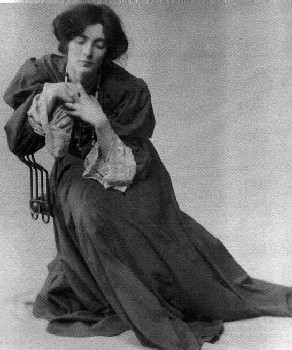Philosophical Rogues and Antiheroes of the Intellectual. Mina Loy (part 2)
Mina Loy, was born 1882 in London of a wealthy English mother and a Hungarian Jewish father. A tenuous and fraught relation with her mother, an ardent Protestant and transfixed on the sensibilities of femininity within the Victorian era. A society where women were seen as second class citizens – but also portayed as an accepting identity under the auspiciousness of Christian rhetoric and power that was the English empire of the 1800s. Intertwined with the subjection of the sexes, which, culturally of the time, fundamentally required traditional values. Her father of Hungarian Jewish decent, is where she drew some inspiration from, seeing how unhappy her mother and father were together, forced into marriage, as Loy was conceived out of wedlock. Loy maintained her discord with Victorian traditionalism, that she aimed exclusively at her mother – her father, later encourages her to study, yet he also, with traditionalist viewpoints of marriage, pushed Loy to marry, with the reasoning, from his perspective, to have her study and meet her future husband. This is the beginning of Loy's burden as young woman, trying to define her self, split between the identities of two parents that in all retrospect should not have been together. Loy, in her early 20's later marries fellow artist Stephen Haweis in Paris, with its similarities and tragic irony, to what she witnessed with her parents, there is a disconnection with her relationship with Haweis – a distrust, whilst at the same time this becomes the start of Loy solidifying herself as an artist and poet. There are tragedies in her life, yet she was able to maintain a vehement directive – a passion. After her and husband's loss of their 1st child to meningitis. In 1906 she and Haweis move to Florence, she gave birth two other children Joella and Giles, to which Joella, the younger of the two children develops polio. Out of desperation and the residual grief from the loss of her first child, she turns to a Christian Scientist, who advises an ad-hoc diet to assist in the attempt at curing the child into recovery. Seeing the improvement in Joella, Loy begins to formulate her desire to connect with a belief or ideology, that was not of the traditionalist point of view. Thus, she encapsulates Christian Science, but like Loy later discovered with Italian Futurism, she does something which is so unique to her character. Loy makes it her own.
She divorces Stephen Haweis in 1917, but Mina Loy, like her husband whilst they were married, releshed in their Infidelity. Of the many lovers of her trysts, she would connect with the Italian Futurists more so Filippo Tommaso Marinetti, where Loy encapsulates the Futurists directness and its projection of the avant garde writings and artwork. Fusing her modernist influences to their use of dynamicism of movements and form. I personally believe that Loy knew and held-fast the masculine within her self, rather than developing a divisiveness in her feminism. She instead understood the tragedies of life, that are of both the male and female. Equal in suffering. Particularly, in the sense that the feminine carries, very much like “The fallen Caryatids (Auguste Rodin sculpture 1881)", the burden that is existence and the mourning of both life and death. Like the Caryatid scupluture, with the stone on her left shoulder, weighted down. But accepting of the weight, for that is life. She mourns the masculine, the male, his recklessness, the wars and the loss of fathers, brothers and sons. Loy didn't mock this, or dissent from it, but in paradoxical way, lived it and became centered within the Futurist art movement. She developed a style of the Futurist concept, that was very much hers, it then in turn freed her up, settling herself into her own world, using the influences of Futurism as the template, she then reworks a manifesto as an eventual rejection of the Futurist art movement (due to its growing facist leanings), through her own personal suffering. Witnessing, in Italy, the horrors of WW1 of returned soldiers. Loy delivers a masterpiece of modernist thought – that is both of the masculine and feminine. In all of its encompaasing framework. To live and to be free.
------
Aphorisms on Futurism (Mina Loy 1914)
DIE in the Past Live in the Future.
THE velocity of velocities arrives in starting.
IN pressing the material to derive its essence, matter becomes deformed.
AND form hurtling against itself is thrown beyond the synopsis of vision.
THE straight line and the circle are the parents of design, form the basis of art; there is no limit to their coherent variability.
LOVE the hideous in order to find the sublime core of it.
OPEN your arms to the dilapidated; rehabilitate them.
YOU prefer to observe the past on which your eyes are already opened.
BUT the Future is only dark from outside. Leap into it—and it
EXPLODES with Light.
FORGET that you live in houses, that you may live in yourself— FOR the smallest people live in the greatest houses. BUT the smallest person, potentially, is as great as the Universe..."
Full poem can be downloaded here




Comments
Post a Comment